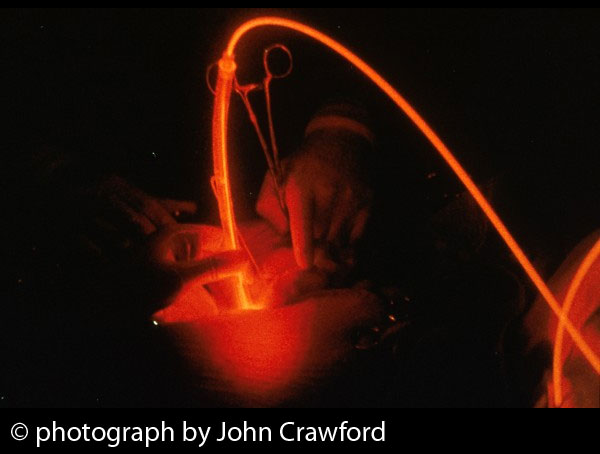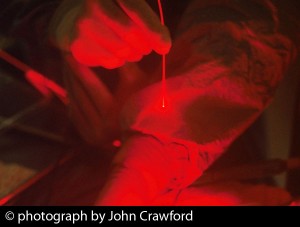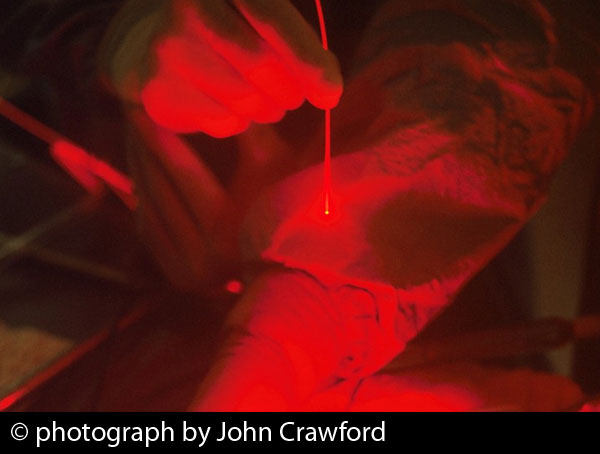Photomedicine is a medical field pertaining to the therapeutic use of light (photo comes from the Greek word for “light”). Since its inception in the late 1800s, photomedicine has steadily evolved, with a resurgence in attention from the medical community in the 1970s. An explosion of technological advances for light-based therapies and diagnostic methods occurred in the 1990s, coinciding with the general public’s demand for safe, effective, and innovative treatments for cancer.
Photomedicine encompasses both the positive and negative effects of light on human health and functioning. For example, too much sun can raise the risk of skin cancer and various skin diseases. Too little sun can result in vitamin D deficiency and other problems. Too much indoor artificial lighting can lead to both physical and psychological problems.
The therapeutic applications of light actually date back thousands of years, when when healers in ancient Egypt and India used plants to enhance the healing effects of light. This was the first documented application of what’s now called photodynamic therapy, a targeted approach to light-based therapy.
Which cancers can be treated with Photomedicine?
Which infections can be treated with Photomedicine?
The most recent, high-tech developments in photomedicine include the use of light for diagnostic purposes, and the use of both lasers and non-laser light for therapeutic purposes. The main applications of photomedicine have included treatment of cancer, heart disease, skin diseases, and many types of infection as well.
Description: Close-up photograph of surgeons’ hands in an operating room with a “beam of light” traveling along fiber optics for Photodynamic Therapy. Its source is a laser beam which is split at two different stages to create the proper therapeutic wavelength. A patient would be given a light-sensitive drug that preferentially accumulates in tumor cells. During the surgery, the light beam is positioned at the tumor site, which then activates the drug that kills the cancer cells.
Four Key Areas of Photomedicine
On this website, we address Photomedicine in terms of four key domains. Please click on each link below for more information on these areas:
1. Photodynamic Therapy (PDT)
Photodynamic Therapy is a powerful approach to cancer treatment that involves the use of light to trigger a chemical reaction in abnormal or mutated cells, ultimately aiding in the destruction of those cells. This photochemical reaction is mediated through the interaction of light, light-sensitizing agents (the so-called photosensitizers), and oxygen. PDT entails a three-step process. In the first step, the photosensitizer is administered to the patient. READ MORE…
2. Immuno-PDT (Photoimmune Therapies)
Some photodynamic strategies are designed to strongly activate the immune system against cancer. These strategies may hold the key to the elimination of lethal metastases, clusters of malignant cells located away from the primary tumor site. We refer to the photodynamic approach to immunotherapy as Immuno-PDT, and the therapies themselves as Photoimmune Therapies. The four main methods include Low-Dose PDT with Immune Adjuvants, Photoimmunotherapy, PDT Vaccines, and Systemic Light Treatment. READ MORE…
3. Fluorescence-Guided Surgery (FGS)
This photodynamically based approach exploits the principle of fluorescence during surgery. Different types of photosensitizers are used to illuminate and “fluoresce” abnormal cells. FGS enables the surgeon to actually see or visualize in real time whatever tissues need to be removed surgically. READ MORE…
Description: Doctors using a fiber-optic probe to expose cancer to laser light. During PDT, the patient is injected or infused with a photosensitizing agent which renders cells in the body sensitive to light. The drug is selectively retained by cancer cells as compared with normal tissue. By activating the photosensitizer, the laser light elicits a photochemical reaction that destroys the tumor without irreparably damaging the surrounding normal cells.
4. Photodynamic Diagnosis (PDD)
Many malignant tumors are first detected only after they’ve become bothersome or symptomatic. Unfortunately, by that time, they’ve had ample opportunity to evolve into a more established or aggressive disease. Had these malignancies been detected much sooner, they could have been treated far more effectively, resulting in better long-term survival. READ MORE…
Learn more and support us by buying our book, The Medicine of Light, and ebooks from our Photoimmune Discoveries eBook Series.





 English
English Français
Français Deutsch
Deutsch Nederlands
Nederlands